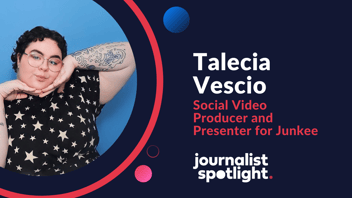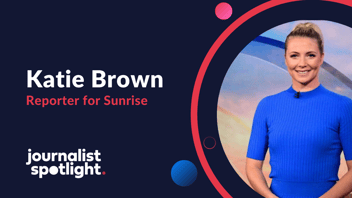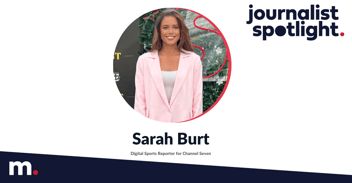Journalist Spotlight | Interview with Euan Black, Work and Careers Reporter at The Australian Financial Review

Today, Medianet is joined by one of our Top 3 most researched journalists on the platform, Euan Black. Euan, as the Works and Careers Reporter for The Australian Financial Review, shares his insight and reportage on the ongoing impact of the pandemic on how we work - and live - today.
 Could you tell me about your initial experience as a writer and reporter? What attracted you to covering Southeast Asia and what were the biggest challenges you’ve faced there as a journalist?
Could you tell me about your initial experience as a writer and reporter? What attracted you to covering Southeast Asia and what were the biggest challenges you’ve faced there as a journalist?
My first role in journalism was an internship at Southeast Asia Globe, a monthly English-language magazine based in the Cambodian capital of Phnom Penh.
I ended up staying there for 18 months. To say I loved every minute of it might be an exaggeration – but only a small one. There were so many fascinating things to write about in Southeast Asia, partly because it was home to such a diverse range of cultures and ways of life, and partly because it was changing at breakneck speed. Plus, living in Phnom Penh was great fun.
My reporting role also came with travel opportunities. A particular highlight was flying to Yangon to see the MMA fighter Aung La N Sang become Myanmar’s first-ever world champion in any major sport – as far as anyone can recall.
I also reflect on that time fondly because I worked with a handful of editors who were patient and kind enough to show me the ropes of a profession I knew nothing about. They taught me the basics of good journalism and encouraged me to keep improving over time.
As for the biggest challenges, it’s hard to look past my terrible grasp of Khmer. Local fixers and translators were enormously helpful, but not speaking the language meant I couldn’t take advantage of all the information available to me.
A far bigger problem for our colleagues at local dual-language and Khmer newspapers though was press intimidation and censorship. Many journalists were detained or imprisoned, and the independent Cambodia Daily was essentially forced to shut down when it received an astronomical tax bill after publishing stories critical of then-prime minister Hun Sen’s authoritarian regime.
How has a background in International Relations and Politics aided your journalism?
My international relations degree gave me a handful of theories to help me understand how countries and governments interact with one another. It also taught me basic economics as well as some useful history that helps me contextualise current events.
I can’t say I think about what I learnt in my degree on a daily basis – and it’s tricky to draw a straight line between something I learnt at university and the way I report on certain stories – but I no doubt picked up some useful knowledge that helps me make sense of things.
You began your time at the Australian Financial Review in 2022 at a time when the jobs market was still reeling from the impact of the pandemic. What was it like covering work and employment during such a volatile period?
Covering workplace issues in the post-pandemic era has been fascinating: so much has changed in such a short space of time.
A case in point is the shift to working from home. If you had told me five years ago that in 2024 the big four banks would let their office-based staff spend half their week working from home, I’d have been sceptical. But hybrid working is so entrenched now that it is sometimes easy to forget how much our schedules today differ from our pre-COVID ways of working. The rapid pace of change means employers still have a lot of work to do to make hybrid working work for them and they have to figure this out while simultaneously grappling with a dramatic shift in employee expectations, a cooling economy, and the rising influence of AI, among many other challenges.
In what ways do you think employment has fundamentally and/or irrevocably changed from the pre-Covid era?
The existential threat of the pandemic made many people reconsider their relationship to work as it encouraged them to reflect on what they value most in life. Many decided they wanted to take better care of themselves and find more time for their hobbies, friends and family. They figured they had been working too much before the pandemic and wanted a better “work-life balance” after it. And many were able to get it.
Historically low levels of unemployment meant workers enjoyed more power at the negotiating table after the pandemic and could push for pay rises as well as more say over when and where they worked. Companies also responded by ramping up their perks and benefits, with many trialling four-day workweeks or beefing up their paid parental leave schemes. But the tight labour market was not the only driver of these trends.
I’d be cautious about describing any changes as irrevocable. Forecasting is a mug’s game, as the saying goes. But, given how much employees get out of it, I’d be surprised if most white-collar workers are working five days a week in the office anytime soon.
What stories and experiences are you most interested in shedding a light on?
I will cover anything that I consider important, interesting and useful to readers.
In the final edition of my weekly Work & Careers newsletter before Christmas, I included these issues, alongside the return-to-office fight, in a list of workplace trends I’ll be watching out for in 2024:
- The significant increase in redundancies and restructures
- The rising influence of artificial intelligence in the workplace
- How employee expectations shifted dramatically after the pandemic
- The public disclosure of major employers’ gender pay gaps in February
- The potential introduction of a federal ‘right to disconnect’
- More companies experimenting with a four-day workweek
- A slowing jobs market in which the balance of power is gradually shifting back to employers.
And lastly, what do you look for in content pitching?
Pitches should be concise, get to the point quickly and explain why the story is newsworthy. They should also be relevant to my round of work and careers. If people aren’t sure what I’m interested in, the best thing to do is read my past work.
Also, I like talking to the people who are affected by the things I write about, so case studies often go a long way too.



